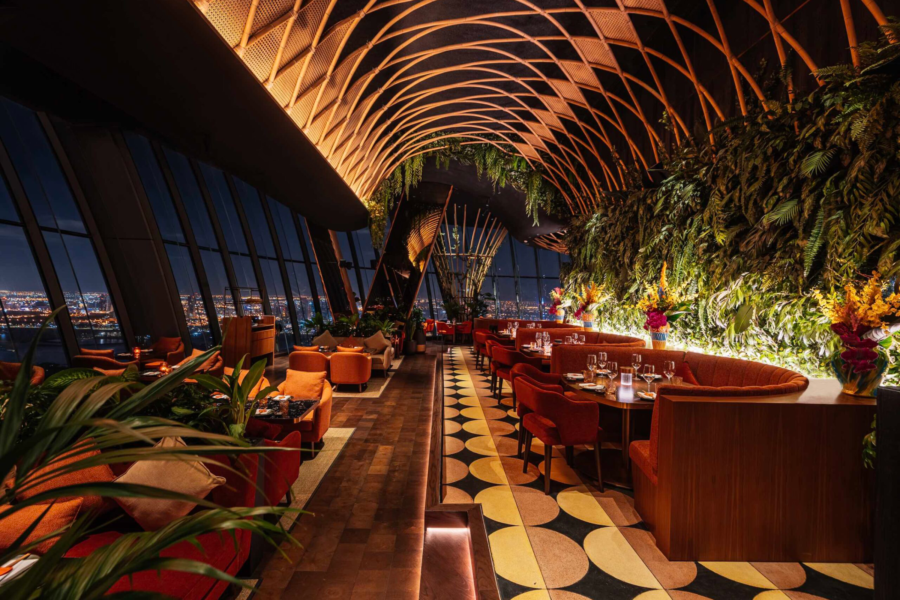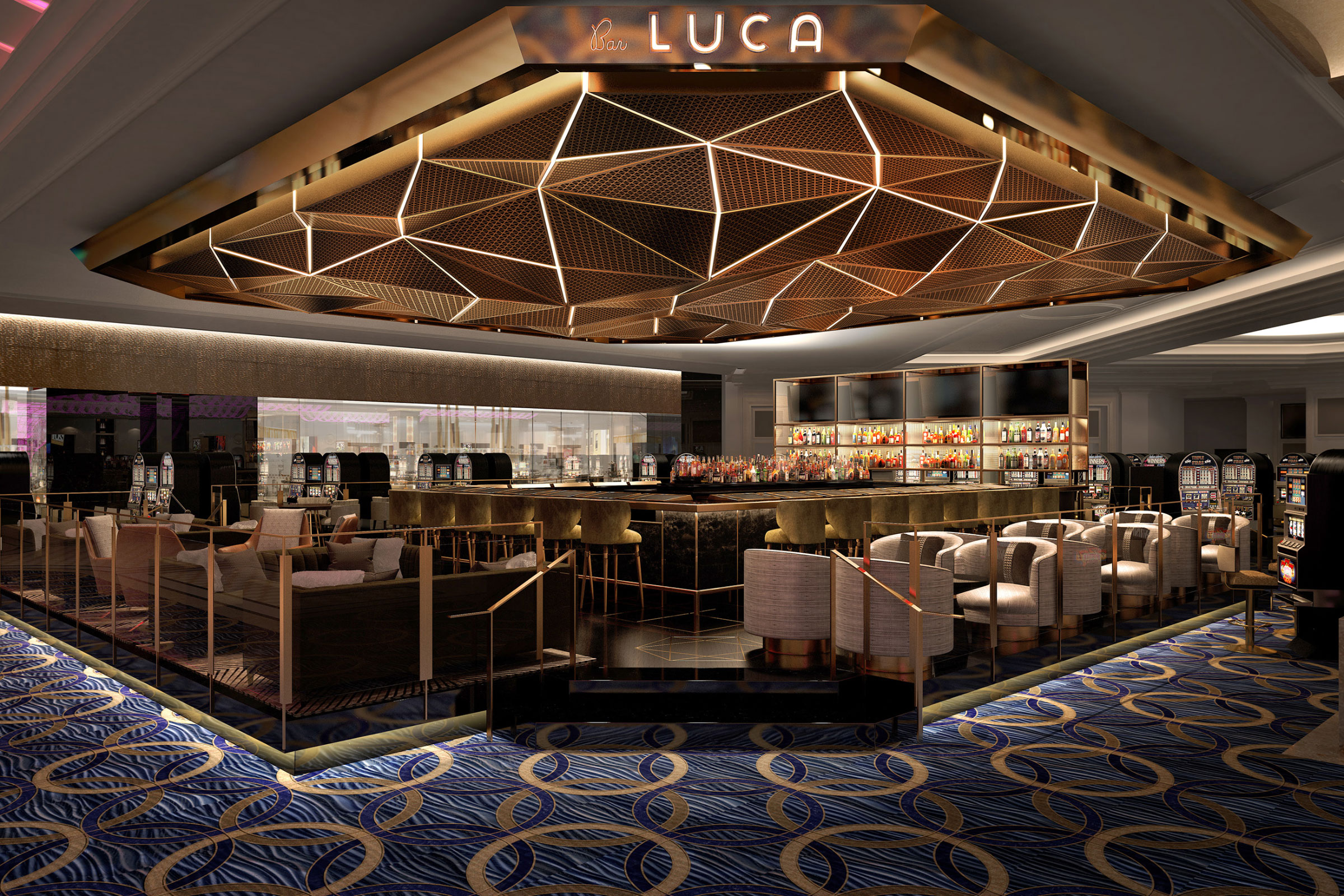Story at a glance:
- Interior designer Taruan Mabry explores new worlds of sustainable design with NYSID.
- NYSID’s MPSS program helps to prepare design professionals for leadership roles in developing and maintaining sustainable interior spaces
- Mabry utilized materials like recycled glass and FSC-certified wood in his Dubai SUSHISAMBA project to showcase sustainable design in hospitality.
Art and design have always been a driving force for Taruan Mabry. Now an adjunct instructor at the New York School of Interior Design (NYSID), he says NYSID’s Master of Professional Studies in Sustainable Interior Environments (MPSS) changed his life. Sometimes he can barely believe the great contacts he made there.
Today Mabry has more than 10 years of experience in interior design, with incredible projects like a skyscraper restaurant in Dubai and cocktail bars in Las Vegas. He grew up in New York with a love of art and went to college in Atlanta, graduating from Georgia State in 2005 before working at The Johnson Studio for a few years. Then the recession hit.
“By 2009 they had laid a lot of us off,” he says. He thought maybe it was time to get a graduate degree. “I was really trying to prove to myself that this was the career path I wanted.” He knew he wanted those letters after his name, but he didn’t want just any interior design degree; he wanted something that would add to his expertise.
He considered architecture, but the program was long. He felt a bit stuck and started doing some extensive Google research when he discovered LEED and eventually NYSID and the MPSS program. “I thought, ‘This is great because now I can hone my interest.’”
The MPSS is a post-professional program structured to prepare design professionals to assume leadership roles in developing and maintaining sustainable interior spaces. Classes are offered in the evenings and on weekends, and students can enroll full-time, part-time, or even study online with video classes.

Interior designer Taruan Mabry explores new worlds of sustainable design with NYSID. Photo courtesy of Taruan Mabry
When Mabry attended NYSID he says it was an interesting time in the world of sustainability, as the conversation around what’s in many of the materials designers select was just heating up. Major companies all over the world were demanding sustainable materials, and designers’ ears perked up.
Mabry graduated from NYSID in 2015. We recently talked to him about his decision to go back to school, what he learned, and where the decision has led him today.
Tell me about your time at NYSID.
I left Atlanta and moved back to New York and attended NYSID for 18 months under the MPSS program. It was wonderful. I learned so much, and I got exactly what I was trying to get, which was a thorough understanding of sustainability—where it is and where it’s going. Being in hospitality design at the time, there wasn’t a conscious effort to use sustainable materials. It wasn’t like what you’d see in health care and education. Those facets of design were already leaning into sustainability, talking about off-gassing and health and wellness because of the volume of people in those spaces.
My mission in my career was to start having the conversation about implementing sustainable materials and systems—including areas like lighting and acoustics. But in hospitality, people didn’t seem to care as much. It was more about what looked upscale. After NYSID I thought about design differently, and it refreshed my interest in it. I wanted to prove to the client that sustainable materials can be upscale.
What are some lessons you took from that program?
Definitely how to be on a team. And how to merge high-end hospitality and sustainability, to do a project successfully and not feel like you’re shortchanging one side or the other. It was a balance I was not anticipating.
Honestly, I really thought it would be a lot more technical, but it was so interesting and engaging. The instructors in the program were real professionals, too, which was a big deal. I love that—that’s what I’m doing now. I always assumed professors in colleges didn’t do that, that they weren’t professionals in other ways. I finally got to see that in action, and I thought to myself, “I can do this. I can do school and work at the same time; it’s not foreign to people now.”
I remember the building was new at that point. It just got LEED-certified. The instructors were so cool, and they’d been in their careers for years. It felt like an Ivy League design school.
I liked the diversity, too. I had already started my career, but a lot of people in my program had come right from undergrad. Some had come from other countries. A lot of students were architects. That diversity caused us to ask a lot of questions. The instructors were very responsive and considerate of how they were going to share their knowledge.

The Rosina Cocktail Lounge at the Venetian in Las Vegas was designed to be a posh experience at the beginning of guests’ nights. Photo courtesy of Simeone Deary Design Group
Let’s talk about your interior design career. How did you incorporate sustainable design in the cocktail bars at the Palazzo in Las Vegas?
Those were with the Simeone Deary Design Group. It was my first time doing three F&Bs (food and beverage concepts) in one hotel. One was Rosina. If you think about your evening in Vegas, you’re going to have these moments—a pre-dinner cocktail place, then a dinner place, then you’ll have a post-dinner cocktail. That was the design angle. You’ll see Rosina is a little posher—it’s the beginning of the night, before you go out to dinner.
For Bar Luca at the Palazzo, you’ll see there’s no wall. It’s a catchall. It might be in the middle of the day, you’re just walking around, you want to grab a seat, check your phone, whatever. That’s why this one is an open oasis. We did a third one, too, that was more of a post-cocktail place—more clubby, more dark materials.
With Simeone Deary I wanted to take the initiative to be inclusive of sustainable and eco-friendly materials; those didn’t necessarily have to be the star of the show, but this was another way for me to use carpet tiles instead of carpet roll, for example. Then there’s the metal in the ceiling. Well, I don’t want chrome because of its harmful process, so let’s do polished aluminum instead. It’s about finding ways to keep the look of something but making sure the fabrication of it is a cleaner process. Chrome is terrible for the environment the way they make it.

SushiSamba in Dubai was a study in color and texture. Photo courtesy of ICRAVE
What about the SUSHISAMBA concept in Dubai?
That one was a lot of work. That was when I was with ICRAVE, who did the first SUSHISAMBA many years ago in New York. Then Dubai came our way. My initial thought was, “Well, Dubai likes spending money. They want the best of the best and are probably not really thinking about what anything is made of.”
Since I was a lead on this I was in charge of most of the materials—leather, FSC-certified wood, tile made from recycled materials, glass. Everything I chose I wanted to lend to the wellness of the space. I had more control of that narrative in terms of materiality, so I ran with it. I was trying to get as much eco-friendly stuff in as possible. And they trusted us. You’d be surprised how open they were. I was very proud of that.
Have any surprising opportunities come your way since being a NYSID student?
This interview. And then Ellen (Fisher, NYSID vice president for academic affairs and dean) and I did a book together. After I graduated and before I started teaching, she asked me if I wanted to do a few sketches with her for a textbook for residential design majors. That was so cool. I was the illustrator and Ellen did the verbiage. I didn’t always want to be a designer. I wanted to be a fine artist. I went to performing art school, and that’s what I really wanted to focus on after high school, but now, seeing how many things I can do being able to draw, it’s incredible. I’m just a kid from Brooklyn who used to draw on the living room floor. Now, to be here working on all of these projects, it’s heartwarming.
What would you tell someone thinking about the NYSID MPSS program today?
You don’t have to just be a designer. You can be a lot of things with this degree. I’m continuing to lean into that more.

